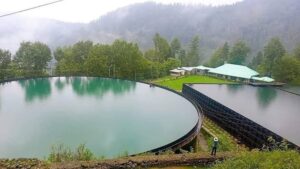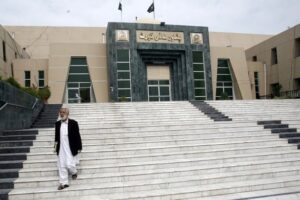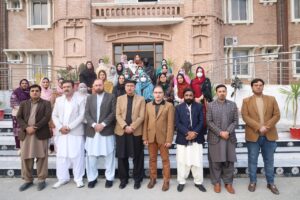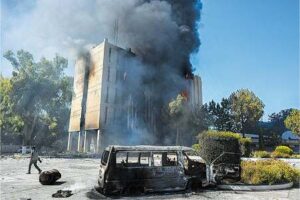PESHAWAR – For over a year, Peshawar has endured a dry spell, turning its air thick with dust and pollution. Respiratory illnesses are rising, particularly among children and the elderly. With no natural relief in sight, experts are advocating for an unconventional solution — artificial rain.
Cloud seeding, a weather modification technique, is gaining global attention. By injecting microscopic particles, usually silver iodide, into clouds, the process stimulates rainfall. While still debated, Punjab recently conducted a successful cloud seeding operation, bringing artificial rain to Jhelum, Gujar Khan, Chakwal, and Talagang.
As Peshawar’s air quality worsens, should Khyber Pakhtunkhwa follow suit?
The science behind artificial rain
Cloud seeding enhances natural precipitation by introducing condensation nuclei into clouds, encouraging raindrop formation. Countries like China and the United Arab Emirates have used this technique to combat drought and pollution. In Pakistan, Punjab’s experiment involved the Strategic Plans Division, Army Aviation, Pakistan Arab Refining Company, and the Environmental Protection Agency.
Peshawar’s pollution crisis is alarming. Studies indicate that air pollution in the city is nearly four times higher than World Health Organization (WHO) standards. The main sources include transport emissions (58.5%), roadside dust (17.7%), domestic burning (11.7%), industrial waste (6.6%), waste burning (4.1%), and commercial activities (1.4%). With nitrogen dioxide levels exceeding safe limits, the health risks are severe—ranging from chronic lung diseases to heart complications.
Dr. Nizam-ud-Din, a health expert, explains: “Air pollution first affects the ears, nose, and throat before reaching the lungs. It causes strokes, asthma, heart disease, and even cancer. Globally, it leads to around seven million deaths annually. In Pakistan, pollution-related illnesses claim over 138 deaths per 100,000 males and 41 per 100,000 females every year.”
Unlike Lahore, which has been at the center of smog-related discussions, Peshawar’s pollution crisis remains overlooked.
Read More:
Tale of Wilting Palms: How the Date Palm Plantation in Peshawar Cost millions
The city’s dry climate and lack of rainfall mean dust and smoke particles accumulate unchecked. Research suggests that pollution levels hover between five and ten feet above ground — posing serious risks to pedestrians, shopkeepers, and commuters.Cloud seeding could provide immediate relief, but experts warn of potential downsides.
While artificial rain can clear pollutants, it could also trigger urban flooding if not carefully monitored. Policymakers must consult meteorologists and environmental scientists before implementing the technology.
Beyond artificial rain: a long-term strategy
Even if cloud seeding proves successful, it cannot be the only solution. To tackle pollution sustainably, the government must enforce strict vehicle emission standards, promote LPG and biofuels, and regulate industrial emissions. Traffic police should deploy environmental squads to monitor vehicle pollution, while routine fuel quality inspections should become mandatory.
On the healthcare front, some steps have been taken to manage waste disposal. Major hospitals, including Hayatabad Medical Complex, Khyber Teaching Hospital, and Shaukat Khanum Memorial Cancer Hospital, have installed high-temperature incinerators to dispose of medical waste.
However, many smaller hospitals and private clinics lack proper waste management systems, further contributing to environmental degradation.
The road ahead
Peshawar remains cloaked in dust, waiting for relief. The city’s pollution crisis is not just an environmental issue—it is a public health emergency. Whether through artificial rain or stricter pollution controls, immediate action is needed before Peshawar’s air becomes unbreathable. The question is, will authorities act before it’s too late?












